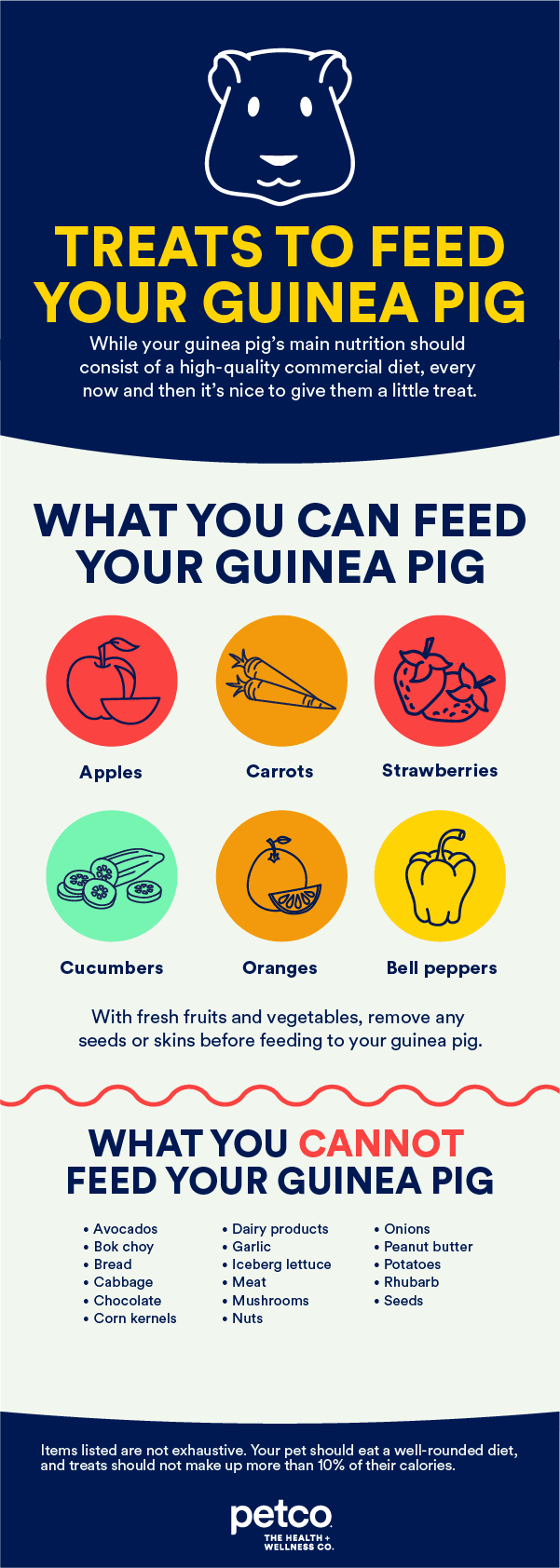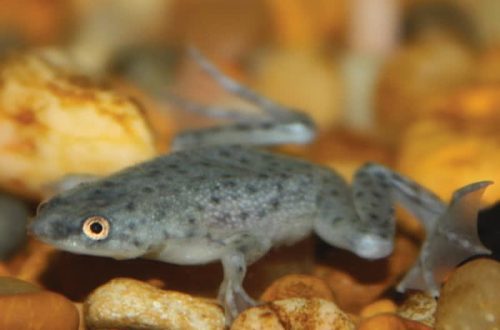
What to eat for a guinea pig, how to properly and nutritiously feed this animal
We all remember the good old cartoon about Winnie the Pooh, whose hero was not averse to refreshment, especially at 11 am, because by this time most people had already finished breakfast, and lunch had not yet begun. Do you think it’s only for bears?
Contents
What do guinea pigs eat?
Let’s take a look at guinea pig nutrition. These animals belong to the category of herbivores. Due to the fact that plant foods are usually low in nutrition, guinea pigs have to eat a lot in order to provide themselves with all the necessary nutrients. Being in their natural habitat, they consume a large number of fresh plants. If you have a vegetable garden and let your guinea pig go for a walk in the garden, it will save you not only from weeds, but also from the garden itself, because it gnaws everything.
Such animals eat almost always. For them, there are no concepts of breakfast, lunch and dinner. Food should come in small portions, and continuously. This contributes to a better processing of rough vegetable feed.
Greens are rich in ascorbic acid. In this regard, living in the South American mountains and absorbing grass all year round, these animals have forever lost the ability to synthesize ascorbic acid (vitamin C). But for people who have adopted a guinea pig at home, it is quite difficult to provide her with the same varied diet as in nature. Therefore, domesticated guinea pigs often encounter with vitamin C deficiency. It is necessary for immune protection, maintains the walls of small capillaries in a normal state and has antioxidant properties.
Externally, hypovitaminosis C manifests itself in small hemorrhages on the mucous membranes, swelling of the joints, bloody diarrhea, loosening / loss of teeth, and even paralysis. If this condition is not treated, everything can end very, very sadly. It must be borne in mind that clinical signs of scurvy develop in 7-10 days. However, a gap in the immune defense can appear immediately, even if there is a slight lack of vitamin C. Therefore, you should always monitor the constant intake of ascorbic acid in the pet’s body.
Sprouted oats and green grass are irreplaceable sources of vitamin C
Remember: a guinea pig should take approximately 20 mg of vitamin C per day and 30 mg during pregnancy. This vitamin is found in fresh herbs, rose hips, lettuce, sweet peppers, sprouted grains. In addition, you can add 5 mg of vitamin C to drinking water.
There is also injectable ascorbic acid in ampoules. Ask at a regular pharmacy, it is not produced specifically for animals. Special fortified foods and supplements for guinea pigs are also suitable for you. When buying food, keep in mind that vitamin C is extremely unstable, its content decreases significantly during long-term storage. But in some extreme conditions, such as stress, illness, feeding babies, the need for ascorbic acid can increase five times. Do not be afraid of an overdose, it happens very rarely, and then only during the use of pure ascorbic acid.
Guinea pigs will have many problems due to malnutrition. These animals have a very long intestine, because they need to break down cellulose. The length of their intestines reaches about 2 meters. That is why digestion takes them a long time. Imagine that the process of passing food through the entire intestine can take a whole week! Therefore, with a sharp change in diet, as well as when feeding an animal with poor-quality food, a guinea pig may experience indigestion. And a violation of the intestinal microflora is a serious problem that can lead to the death of a pet.
Vegetable foods contain a small amount of protein, so herbivores often make up for this deficiency by partially digesting cellulose-processing bacteria. These are helpers of herbivores that multiply in the intestines in large numbers. However, in rodents bacteria live in the large intestineand food is digested in the small intestine and stomach. Therefore, do not be surprised if one day you find your guinea pig eating his own litter, she is trying to get the maximum of everything that nature has given her.
Guinea pig foods can be divided into coarse, succulent and concentrates.
- Roughage – branch forage and dry grass, contain little moisture, but a lot of fiber. This type of food is needed not only for grinding teeth, but also for improving bowel function and maintaining the cellulose-processing microflora in the intestine in a viable state. Fiber, which cannot be digested, has an absorption effect, it seems to stick and carry away with it all kinds of pathogenic bacteria and toxic substances, thus cleansing the intestines. Therefore, the cage must have a constant supply of high-quality hay. In addition, this method will help ensure that the ever-chewing guinea pig is fed while you are at work or on a trip, because hay spoils very slowly. The main thing is not to make a mistake with the quantity.
- Juicy food is greens and vegetables. You should talk about this type of food in more detail, because there should be a lot of it in the pig’s diet.
- Green fodder is a huge concentrate of various herbs. Guinea pigs eat dandelions, yarrow, greater and lanceolate plantain, wheatgrass, chickweed, alfalfa, red and meadow clover, as well as meadow grasses such as timothy and bent grass. When feeding greens, you also need to be careful and measure.
vegetable nutrition
Guinea pigs can give the following vegetables:
- all varieties of lettuce, but remember that it must be very fresh, because tender lettuce leaves can go bad in just a few hours;
- chicory;
- Chinese cabbage;
- broccoli;
- parsley – contains a large amount of vitamins, magnesium, potassium, calcium and phosphorus salts; it is especially valued for its magical ability to restore strength and for its antiseptic effect;
- Jerusalem artichoke;
- dill – rich in carotene, calcium salt and iron, promotes digestion, reduces the formation of gases in the intestines, however, dill, like parsley, is spicy and contains a lot of essential oils, so you should not give it in large quantities;
- cucumbers – the subject of adoration for guinea pigs, cucumber juice has a weak anti-inflammatory effect, so this vegetable also promotes digestion; cucumbers are low-calorie, they will help your animal lose weight, but you should not base the diet on them only – young animals will grow poorly;
- sweet pepper – like no other vegetable is rich in ascorbic acid, in addition it has a large amount of carotene, is given to guinea pigs with seeds, slices;
- carrots are a healthy food, contain carotene, glucose, vitamins E, K, C, salts of microelements, vitamins of group B; but remember that starting from the end of winter until early spring, the amount of nutrients in carrots is reduced, you can experiment and use carrot tops, which will also be very useful for your pet;
- melons (melon, pumpkin, zucchini, watermelon) – are not inferior to fruits in terms of vitamin content and even surpass carrots in the amount of carotene; are given in slices along with the crust. Guinea pigs are very useful pumpkin and zucchini, they serve as dietary food, but are not eaten very willingly by the pig, pumpkin seeds have a large amount of vitamins and minerals, help prevent the appearance of worms, and most importantly, it is a good source of zinc. Zinc is necessary for maintaining the skin in good condition, serves as a prevention of skin diseases and good fertility in males;
- tomatoes – enriched with vitamin C and carotene. Guinea pigs are given only ripe tomatoes, because green ones have a toxic substance – solanine, which is destroyed when ripe;
- potatoes – high in starch, potassium, ascorbic acid and B vitamins; green and sprouted tubers, as well as tops, also contain a lot of solanine; you need to be very careful when feeding green and long-stored potatoes;
- cabbage – very useful, saturated with protein, sugar, vitamins, and most importantly – organic sulfur. Sulfur is necessary to keep the coat and skin in good condition, but at the same time, cabbage contributes to strong gas formation (especially white, cauliflower and red cabbage). You can give only dry top leaves of white cabbage. If you are a new owner of a guinea pig, then it is better to give up cabbage altogether. Broccoli is less dangerous;
- rowan berries – red rowan contains a lot of carotene, and chokeberry contains a lot of rutin (vitamin P) and ascorbic acid. Rutin is known for increasing the strength of capillaries and retaining vitamin C in the body, and ascorbic acid contributes to a more active action of rutin;
- pears and apples – contain a lot of pectins, sugar and carotene. Pectins are prebiotics – nutrients for various lactic acid beneficial bacteria found in the intestines.
It happens that guinea pigs eat oranges, bananas and various berries. If your pet eats them, then you need to make sure that these juicy foods do not spoil or get trampled.
Concentrates
The concentrates are high-calorie feed, they contain a large amount of protein and carbohydrates, these include:
- legumes – fed in crushed form, as well as mixed with other feeds; be careful: they can cause bloating;
- seeds;
- corn;
- white stale bread;
- crackers;
- most ready-made guinea pig foods (ignore the presence of nuts, dried fruits and corn sticks – no one will eat them anyway). Your pet will benefit from grass-based meals, which guinea pigs usually gobble up with pleasure. Adult pigs can be fed 10-20 g per day. Young, lactating and pregnant gilts are in great need of these feeds. You can give them up to 40 g per day.
Conclusion
Summing up technology of feeding guinea pigs, we can say the following:
- it is desirable to give concentrates in the morning when leaving for work and at night;
- because succulent feed can quickly deteriorate and must be removed as needed, then vegetables, herbs and fruits should be given when the animal is under supervision;
- well, hay should always be in the cage, and there should always be a mineral-salt stone in the cage.
Remember that these animals can’t stand hunger at all. A guinea pig that refuses to eat for any reason quickly develops exhaustion and dehydration. In case of intestinal dysfunction, the body collects moisture from the entire body and you need to take action. For example, you can inject liquid by injection (5% glucose solution or various isotonic solutions), water and artificially feed the animal with vegetables chopped in a mixer to a puree state or baby food based on vegetables.
The habit of constantly eating food can do more than just good. The presence in the diet of a large amount of concentrated feed and low mobility can lead to obesity. This condition is common in domestic pigs. If your pet’s belly hangs to the ground, you need to take weight loss measures.
When developing a new diet, it is necessary to minimize the amount of carbohydrate vegetables (root and tubers) and concentrated feeds, while increasing the amount of roughage so that there is always something to eat and not gain weight, and low-calorie vegetables, as well as to keep the animal in sports. For the latter, you can purchase a larger cage or send the pig out to run around the apartment more often (but under strict supervision).





